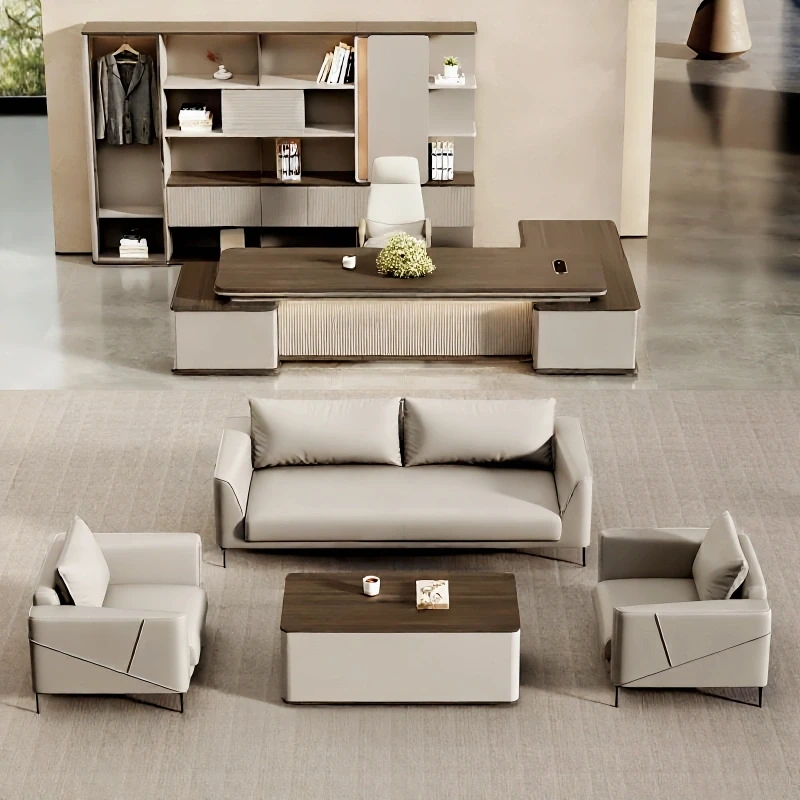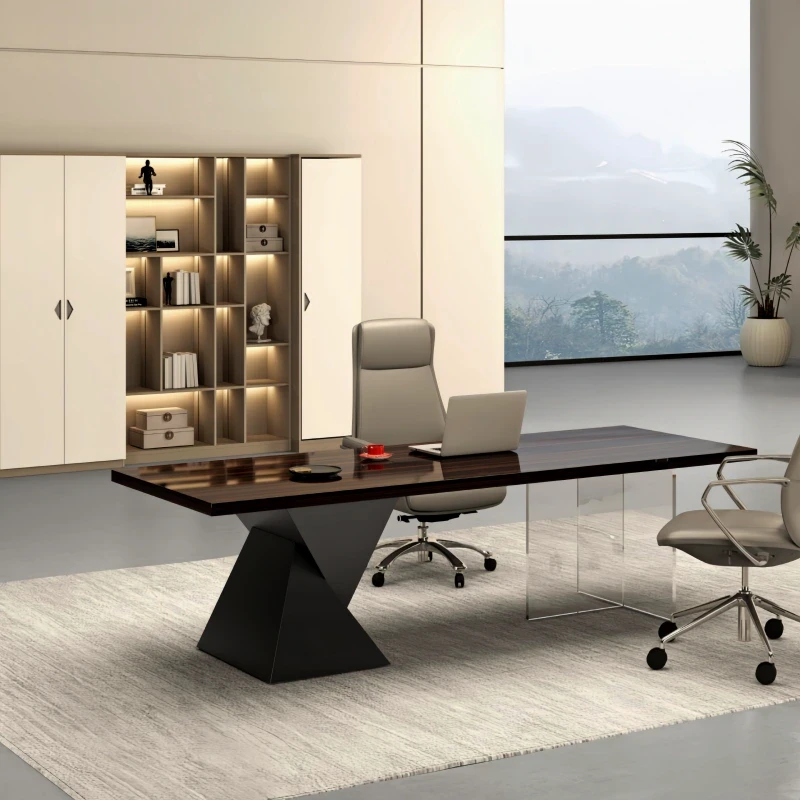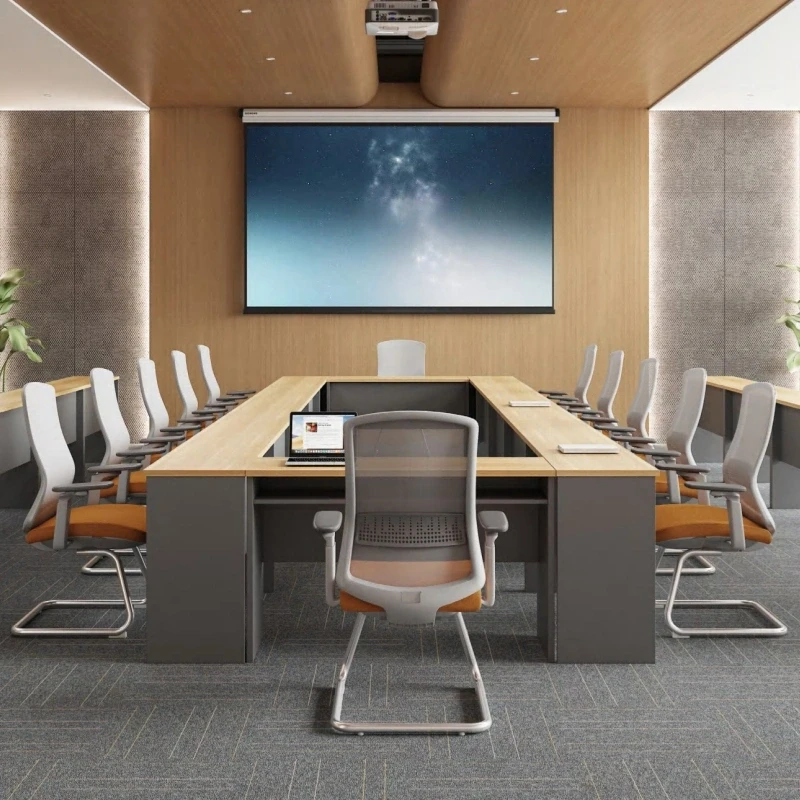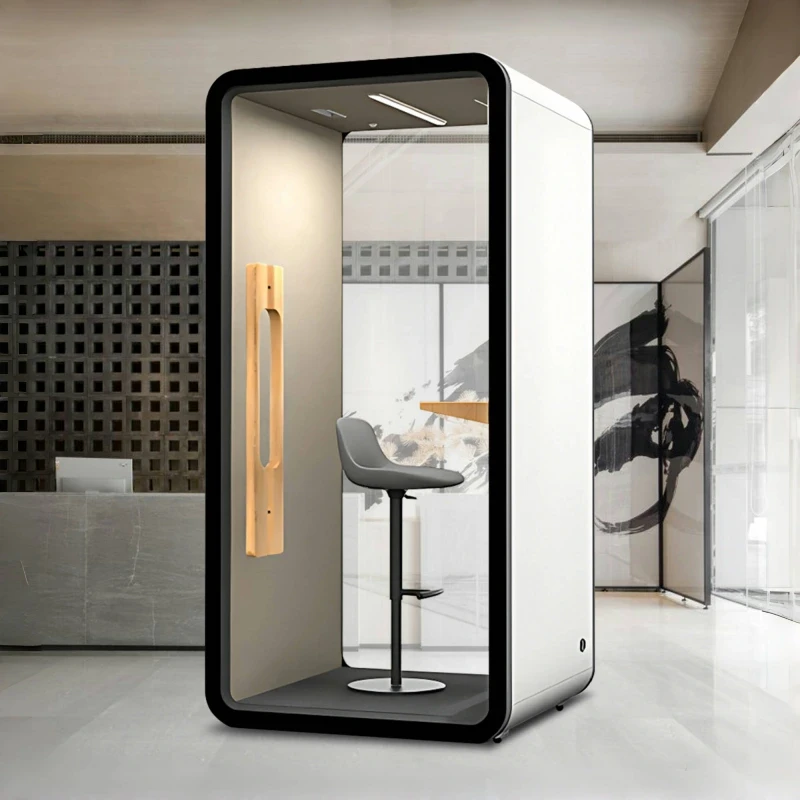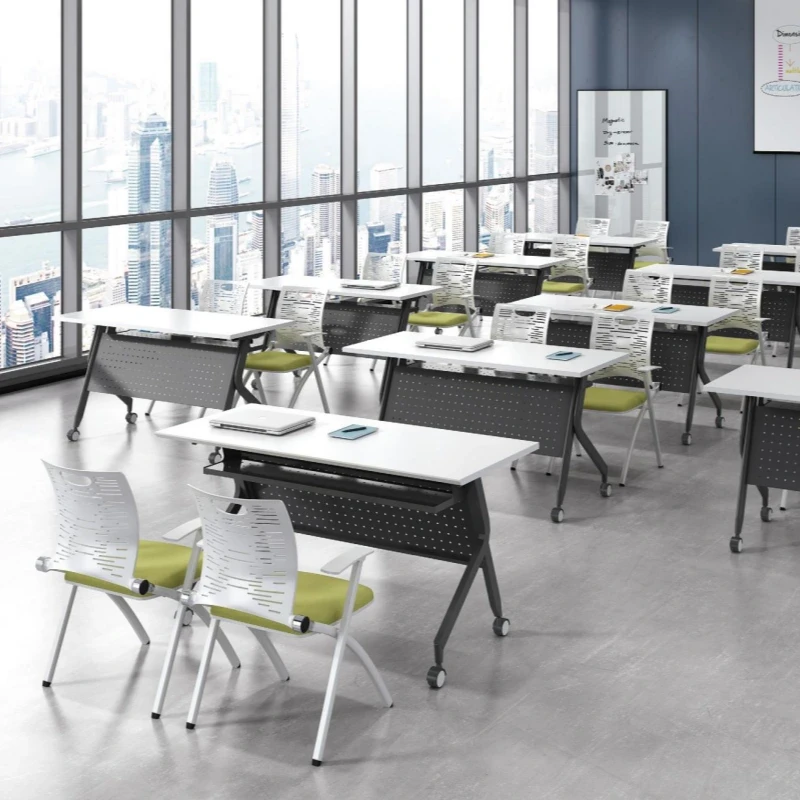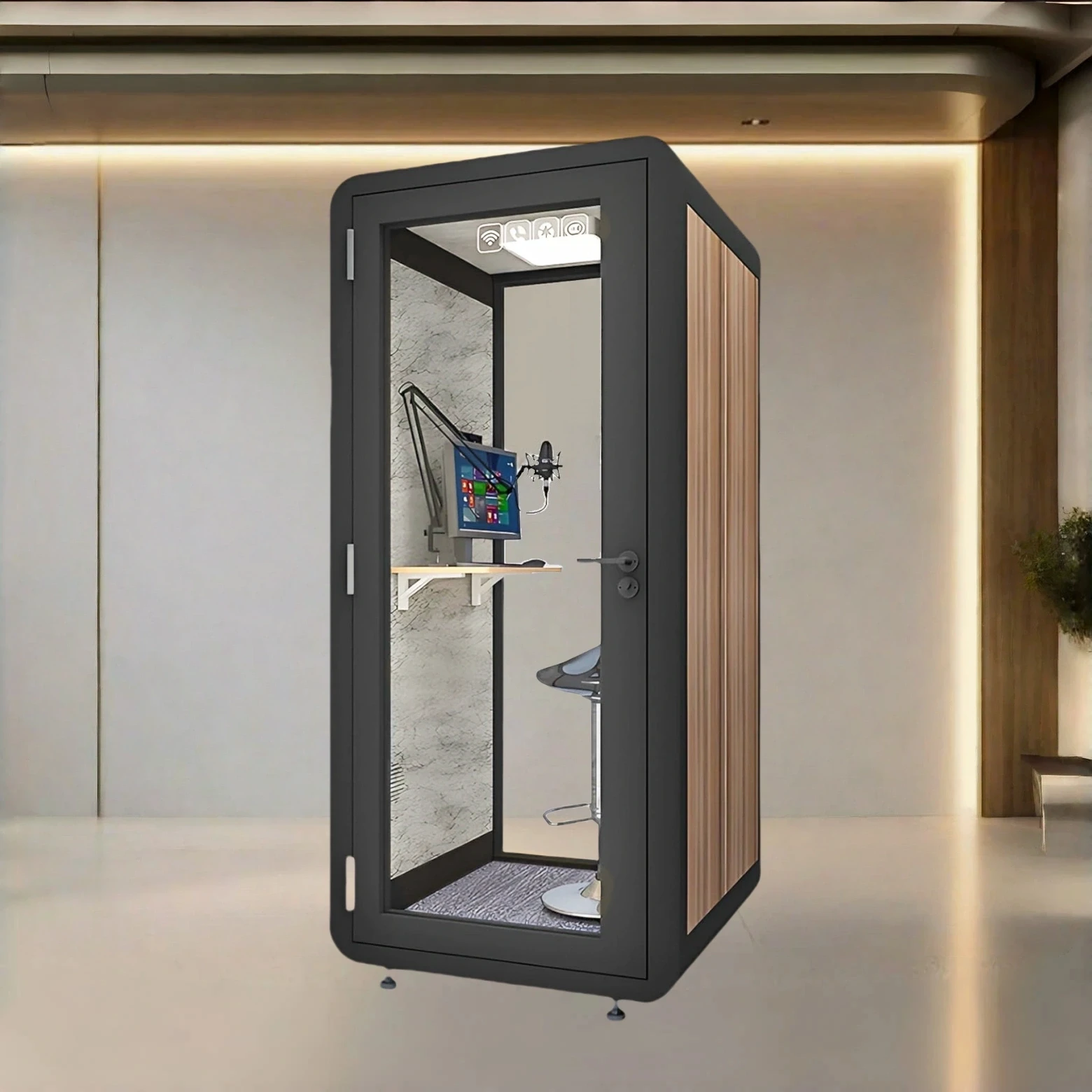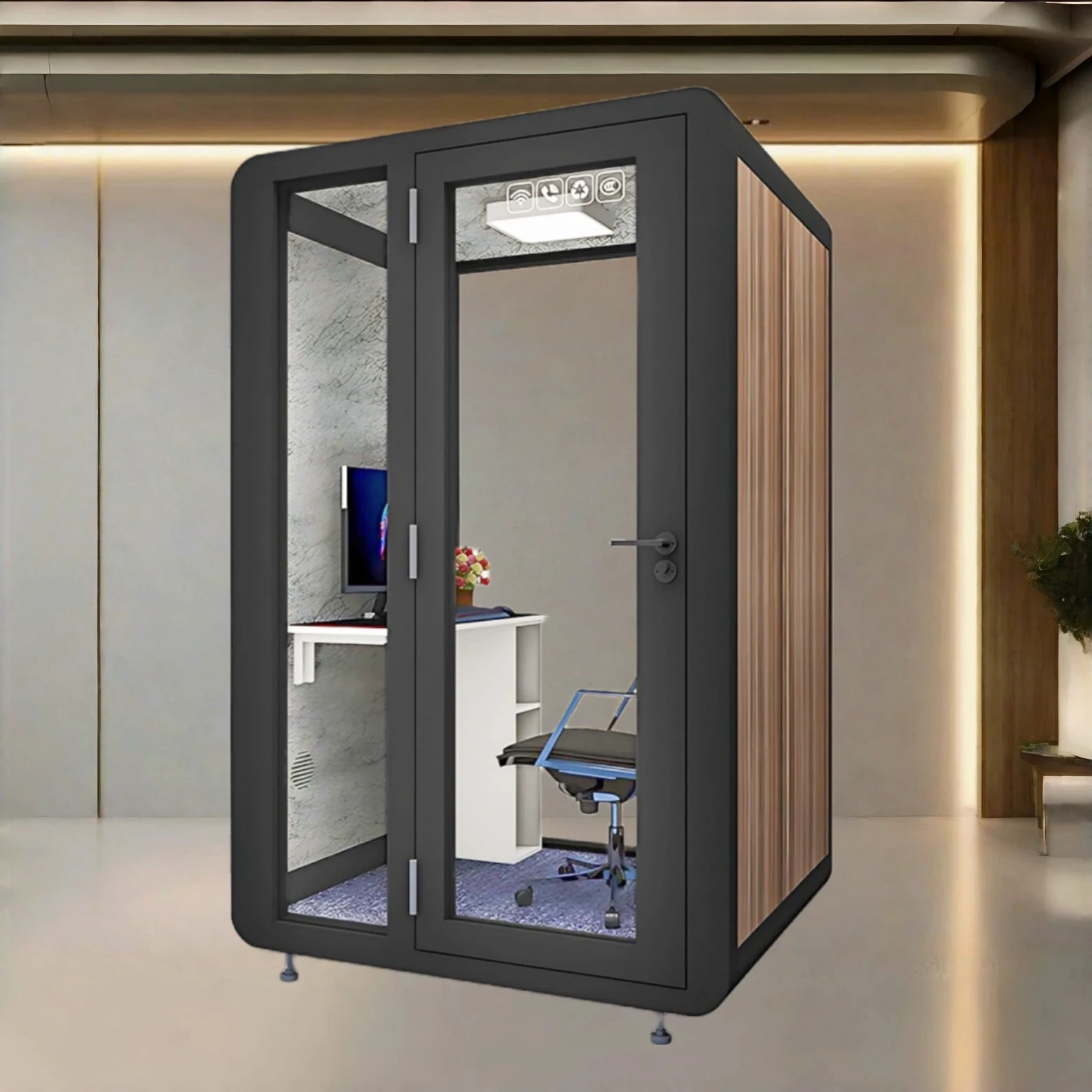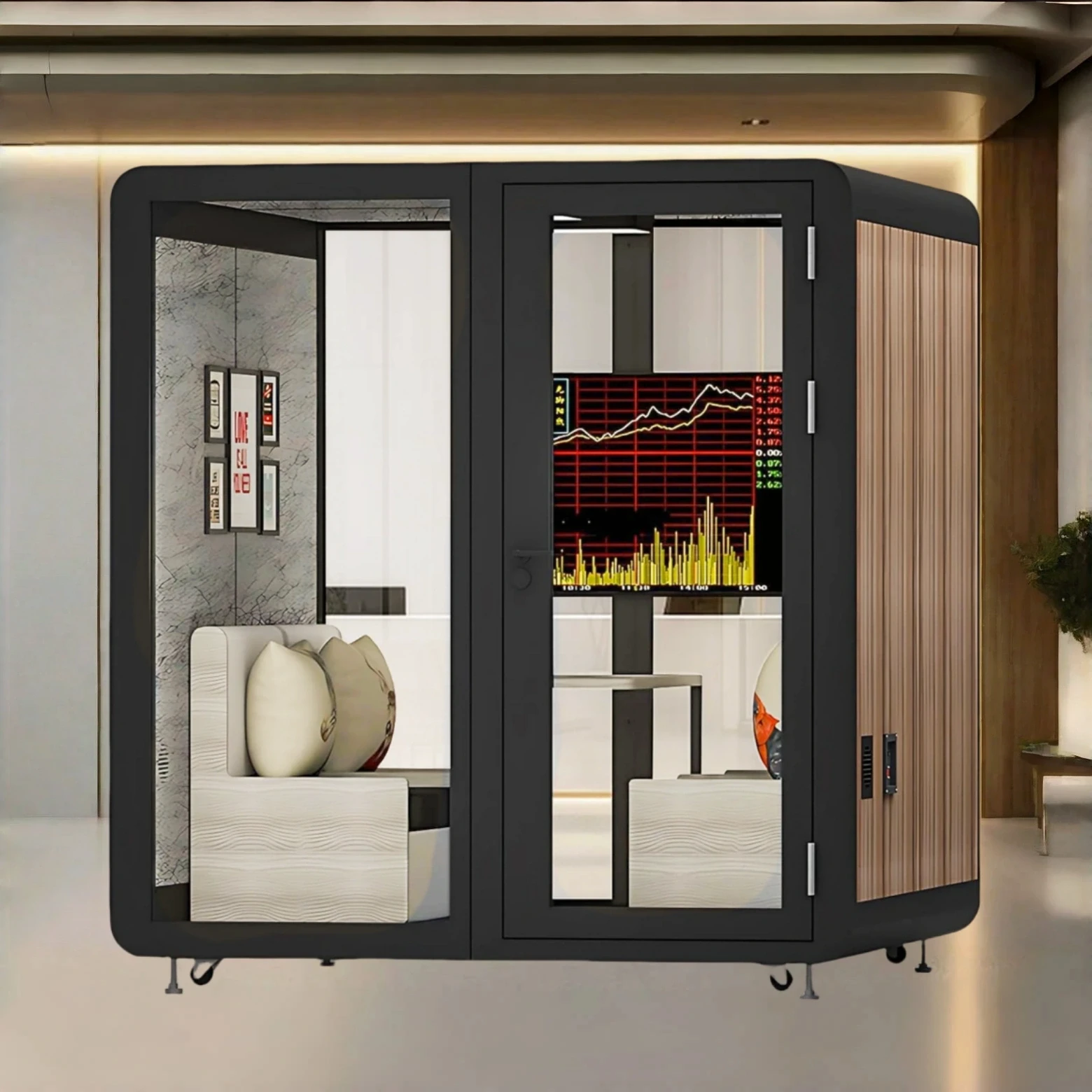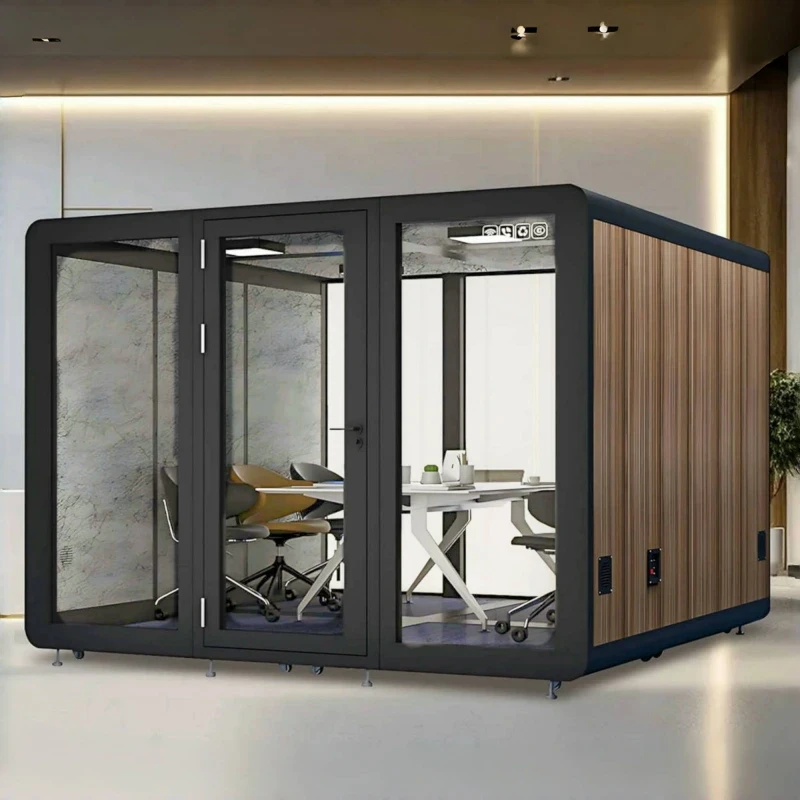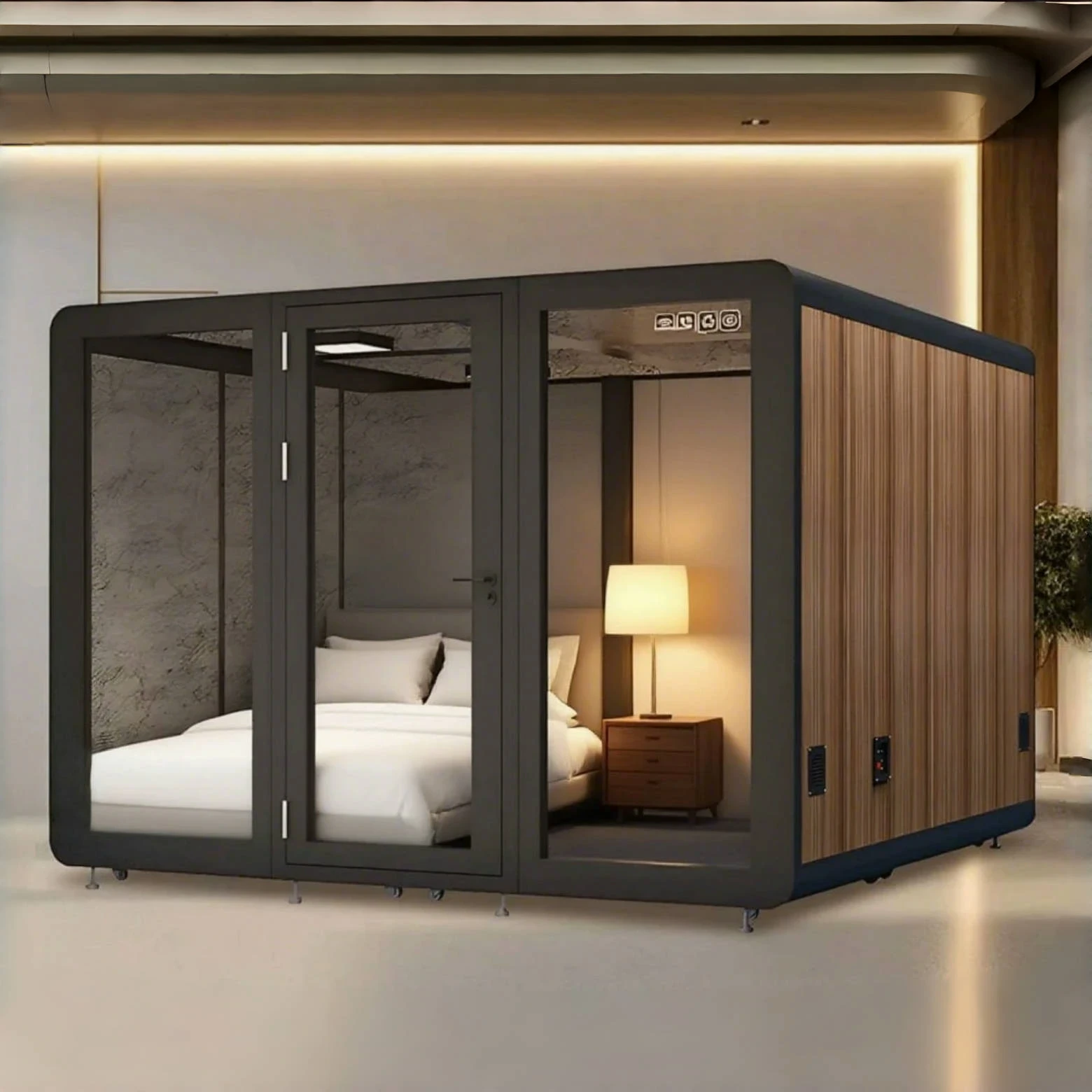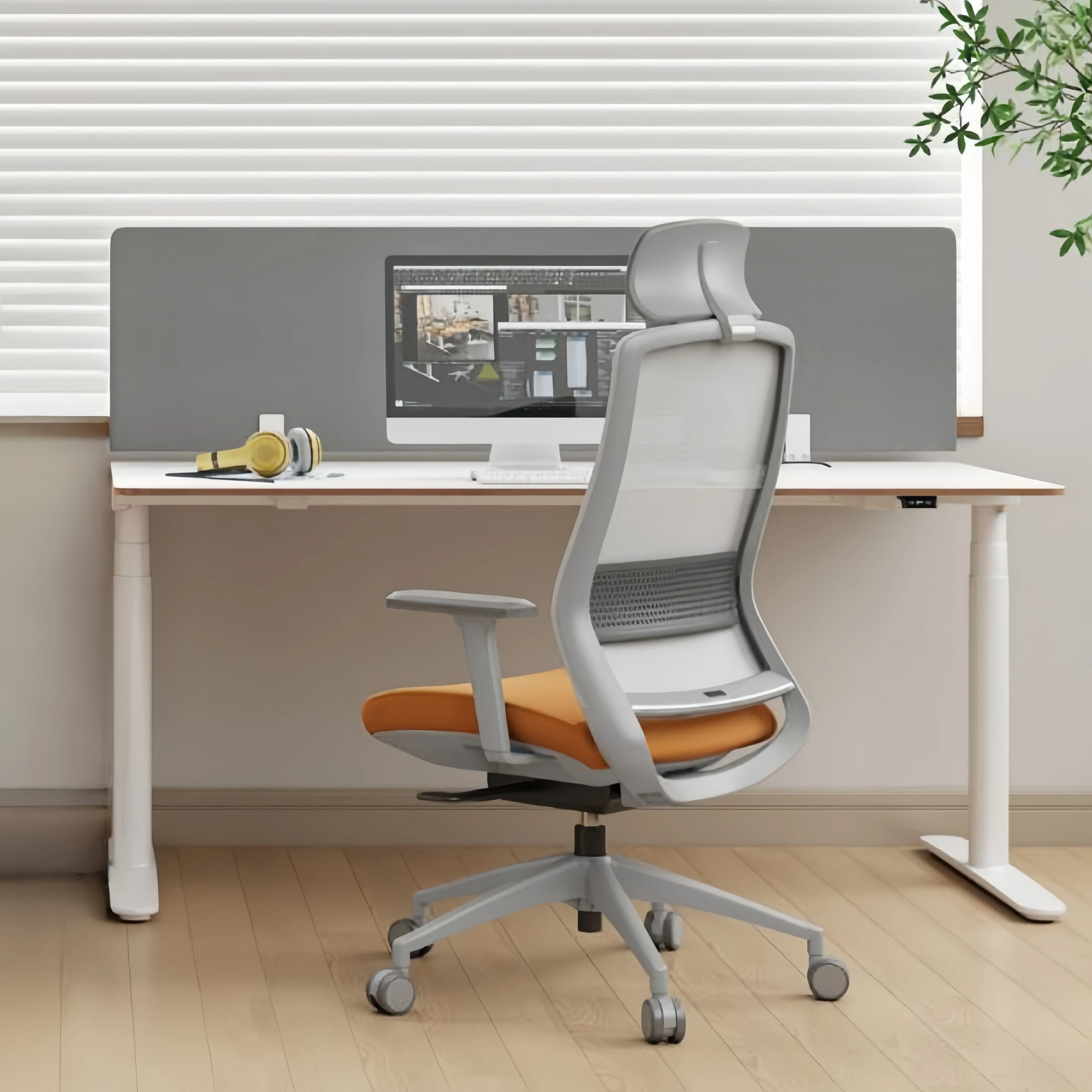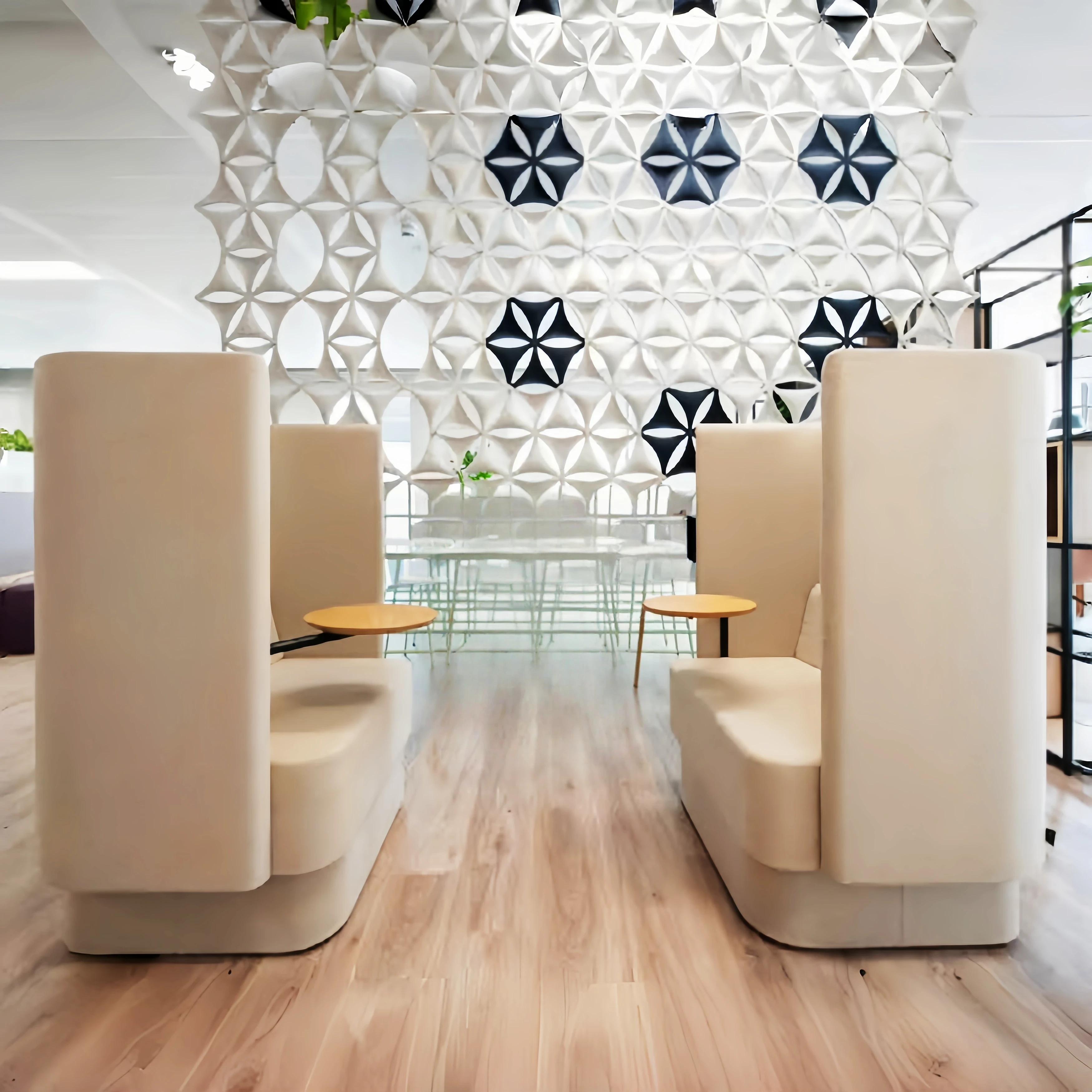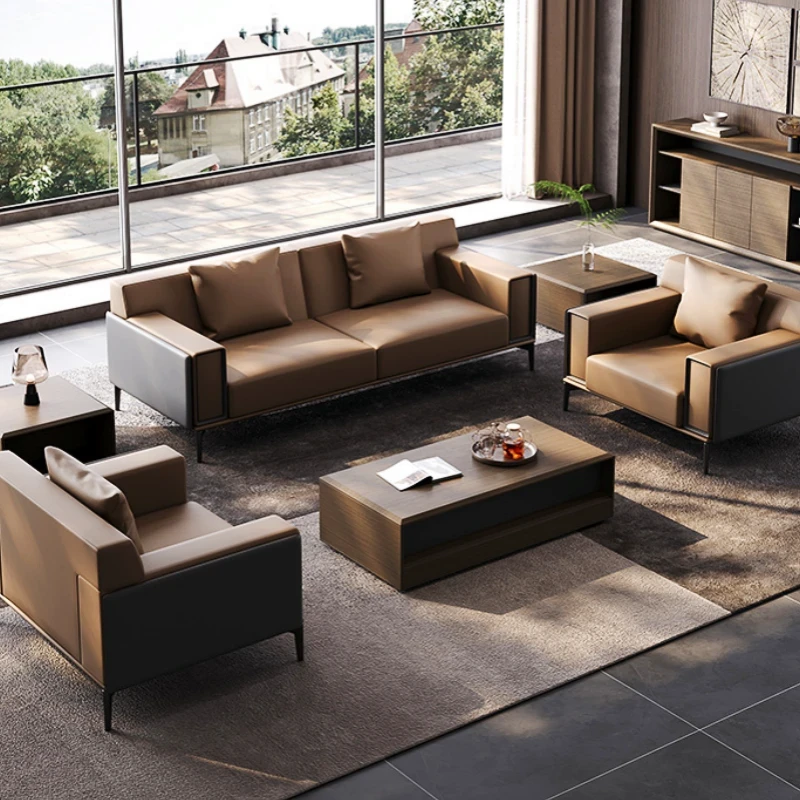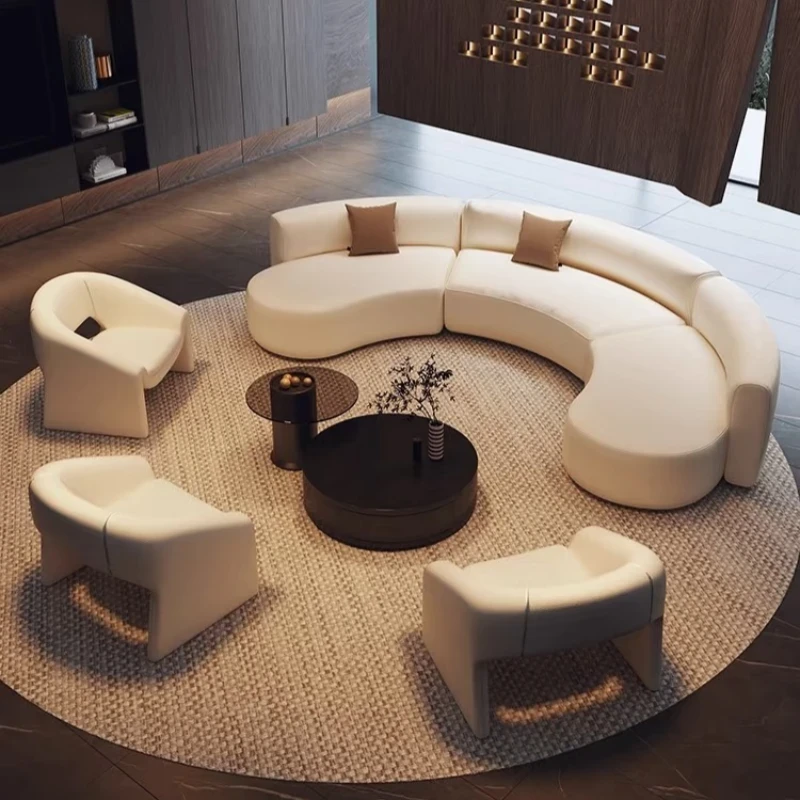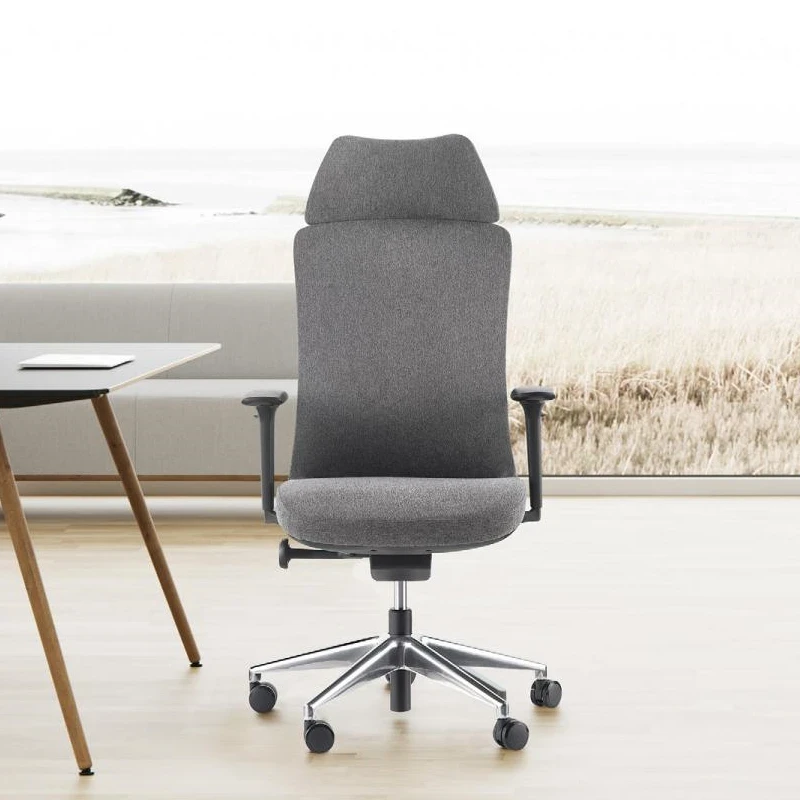The Golden Rule of Workstation Size: The Science and Ergonomics Behind 4–6 ㎡
Oct 31, 2025
Most of a company's external and internal communication activities take place in the meeting room. Choosing the right meeting table shape can create a relaxed atmosphere, reduce potential conflicts arising from differing opinions, and improve meeting efficiency, especially increasing the success rate of project negotiations.
The choice of a meeting table should be determined based on the size and shape of the meeting room. Generally speaking, round or oval meeting tables can create a harmonious communication atmosphere and are also conducive to reaching a consensus among participants.
Meetings held in such an egalitarian atmosphere allow people to relax, speak freely, and contribute to the expression of creativity and teamwork.
Long, rectangular meeting tables are more suitable for more formal meetings, such as management decision-making meetings.
However, in a long, rectangular meeting table, different seats represent different levels of position, making it difficult to create a lively meeting atmosphere.
In addition, to avoid an overly tense atmosphere during meetings, it's best to avoid right angles on the four corners of the conference table.
Slightly rounded corners can prevent negative energy flow and also reduce the risk of injury.
Common materials for conference tables on the market include:
Sintered stone, solid wood, panel furniture, stainless steel, and marble. Different materials have different prices. Panel furniture offers the best value for money. Choosing Huco steel-pressed panels provides a texture close to natural wood, but at one-third the price. WESOME office furniture uses Huco steel-pressed panels, which are high in hardness, have a good texture, and offer excellent value, making them popular with most businesses. For more information on Huco steel panels, please contact WESOME.
Sintered Stone Conference Tables
Sintered stone is a synthetic material made from natural raw materials through a special process, pressed using presses exceeding 15,000 tons, combined with advanced production technology, and fired at temperatures above 1200℃. It is a new type of large-format ceramic material capable of withstanding cutting, drilling, and polishing. Sintered stone boasts advantages such as high temperature resistance, corrosion resistance, wear resistance, fire resistance, stain resistance, and a harder texture than ceramic tiles, making it less prone to breakage. However, it is not cost-effective; the larger the conference table, the higher the price. Therefore, sintered stone conference tables are not commonly seen on the market and are mostly used in home settings.
Solid Wood Conference Tables
Solid wood refers to raw, unprocessed natural wood panels. Solid wood conference tables have very high requirements for craftsmanship and materials. The selection, drying, finger-jointing, and splicing of solid wood are all subject to strict requirements. If any step in the process is not strictly controlled, minor issues such as cracking and loosening at joints may occur, while major issues may include deformation of the entire conference table, rendering it unusable. Therefore, it is not cost-effective; the more precious the wood, the higher the price. However, it possesses characteristics such as being natural, environmentally friendly, and aesthetically pleasing.
Stainless Steel Conference Tables
These are not commonly found on the market. Stainless steel conference tables are heavy and difficult to move, suitable for occasions where movement is not required. Their advantages include ease of maintenance and long lifespan.
Marble Conference Tables
Marble on the market is divided into two types: natural marble and artificial marble. Artificial marble contains radiation, which is harmful to the human body; natural marble is produced by cutting, polishing, and carving a single piece of high-quality marble. The high price of the stone, high carving costs, and transportation costs make natural marble conference tables expensive, heavy, and difficult to move.
Plate Panel Conference Tables
There are many types of panel materials commonly found on the market. Different types have different advantages and disadvantages, and their prices vary. WESOME's previous articles (
Know Yourself and Your Enemy to Choose the Most Suitable Furniture: Learn More About Panel Materials
) summarized the knowledge of common panel materials on the market. Interested readers can click to view. For panel furniture, WESOME recommends boards pressed from German-imported Hooker steel plates. These offer high cost-performance, good quality, and a texture close to solid wood. They are environmentally friendly and odorless, and possess characteristics that solid wood lacks: they are less prone to deformation, cracking, and splitting. The ability to be repeatedly disassembled and reassembled is a feature not found in any other material used for conference tables. Therefore, this material is a favorite among office furniture brands.
Chairs are an essential piece of furniture in conference rooms, and choosing the right chairs is a major headache for businesses. People don't spend much time in conference rooms, so choosing expensive ergonomic chairs (which are often numerous but rarely used) is risky. Inexpensive office chairs, on the other hand, can lower the company's image during formal meetings or when receiving visitors.
For companies with two or more conference rooms, they can divide the rooms into different functions and purchase different chairs based on usage needs. For example, conference rooms that frequently receive visitors can use more expensive, stylish chairs, while ordinary conference rooms can use more cost-effective, inexpensive mesh chairs.
Unlike office chairs, meeting room chairs involve multiple participants, so the arrangement of chairs requires careful consideration.
Different arrangements can evoke different psychological responses.
Proper arrangement
can improve communication efficiency, while improper arrangement can easily lead to communication breakdowns.
In business meetings, chair arrangement can be determined by the purpose of the meeting. For simple, ceremonial business exchanges, a conference table can be omitted, and
the chairs on either side of the host and guest can be placed facing each other. Adjacent chairs on either side can be placed at a 45-degree angle to avoid a confrontational atmosphere.
Using sofa chairs if possible
can further create a friendly and relaxed atmosphere.
For business meetings involving project negotiations,
facing each other can create a sense of equality.
Therefore, it's best to arrange chairs at either end of a long conference table, with a table in between to ease the tension and prevent participants from becoming overly nervous.
For internal company meetings, in one-on-one meetings between superiors and subordinates,
their chairs can be arranged at a 90-degree angle or side-by-side. This allows for easy observation of the other person's expression while avoiding the tension of eye contact.
For small departmental meetings, when assigning tasks, the supervisor can be seated to one side, with subordinates arranged in an arc opposite. For general departmental discussions, arranging all chairs in a circle can effectively enhance the lively atmosphere and is ideal for creative meetings.
Subscribe To Our Newsletter
You Can Get The News Of Our Products
SIGN UP

 USD
USD
 GBP
GBP
 EUR
EUR
